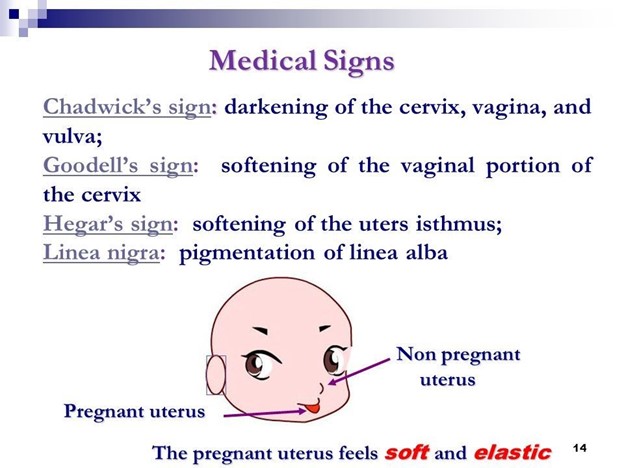A nurse is assisting with a prenatal examination of a client who is at 8 weeks of gestation. The nurse notes that the client's vagina and vulva are a purplish color. The nurse should document this finding as which of the following?
Ballottement
Chadwick's sign
Hegar's sign
Chloasma
The Correct Answer is B
Chadwick's sign is a bluish or purplish discoloration of the cervix, vagina, and vulva that can occur during pregnancy. It is caused by increased blood flow and vascular changes in the area. It is considered a normal finding in early pregnancy and is often used as a sign to support the diagnosis of pregnancy.
Ballottement refers to a palpable rebound of the fetus when the examiner pushes on the mother's abdomen.
Hegar's sign is the softening and compressibility of the lower uterine segment, which can be felt during a bimanual examination.
Chloasma refers to the development of hyperpigmented patches on the face, often referred to as the "mask of pregnancy."

Nursing Test Bank
Naxlex Comprehensive Predictor Exams
Related Questions
Correct Answer is A
Explanation
Prealbumin is a protein that is produced by the liver and is an indicator of the body's nutritional status. A low prealbumin level can indicate malnutrition, which is common in clients with COPD. Therefore, a dietary referral can help the client meet their nutritional needs and prevent further complications.
Correct Answer is C
Explanation
When caring for a client with paranoid schizophrenia who has delusions or beliefs that are not based in reality, it is important to respond in a therapeutic and empathetic manner. Acknowledging the client's fear and validating their experience can help establish trust and promote open communication.
The response "This must be very frightening for you. Let's talk more about it" demonstrates empathy and a willingness to engage in further discussion, allowing the client to express their concerns and facilitating a therapeutic relationship.
Whether you are a student looking to ace your exams or a practicing nurse seeking to enhance your expertise , our nursing education contents will empower you with the confidence and competence to make a difference in the lives of patients and become a respected leader in the healthcare field.
Visit Naxlex, invest in your future and unlock endless possibilities with our unparalleled nursing education contents today
Report Wrong Answer on the Current Question
Do you disagree with the answer? If yes, what is your expected answer? Explain.
Kindly be descriptive with the issue you are facing.
